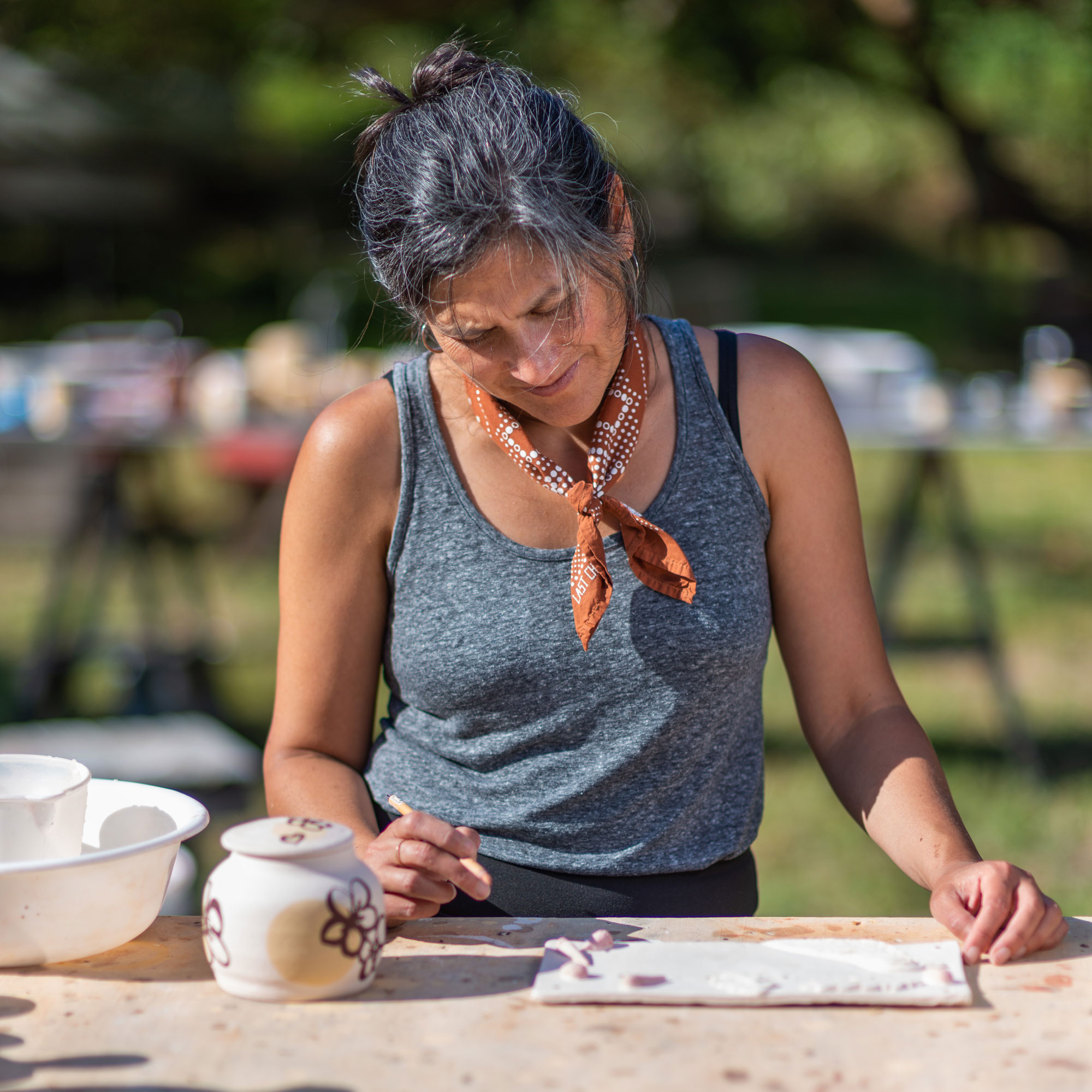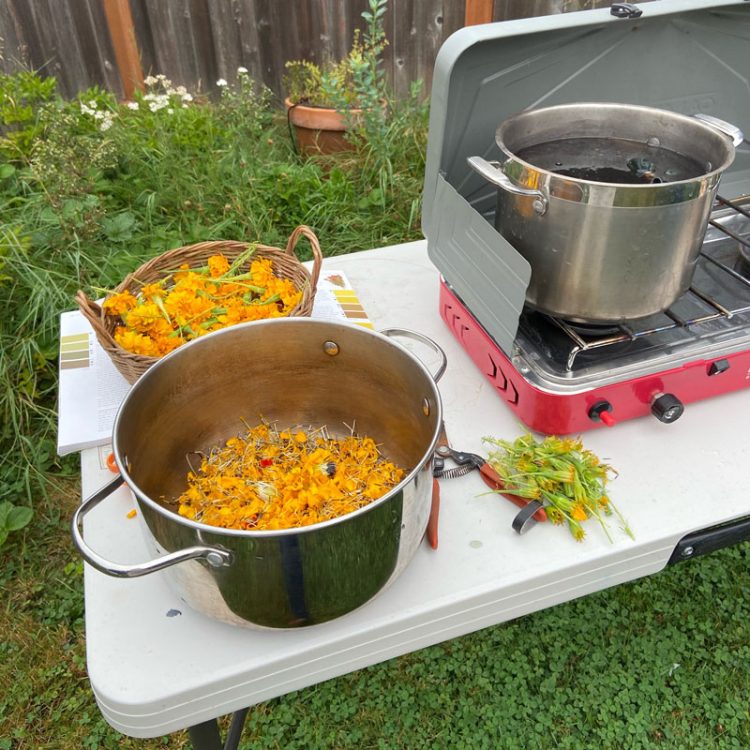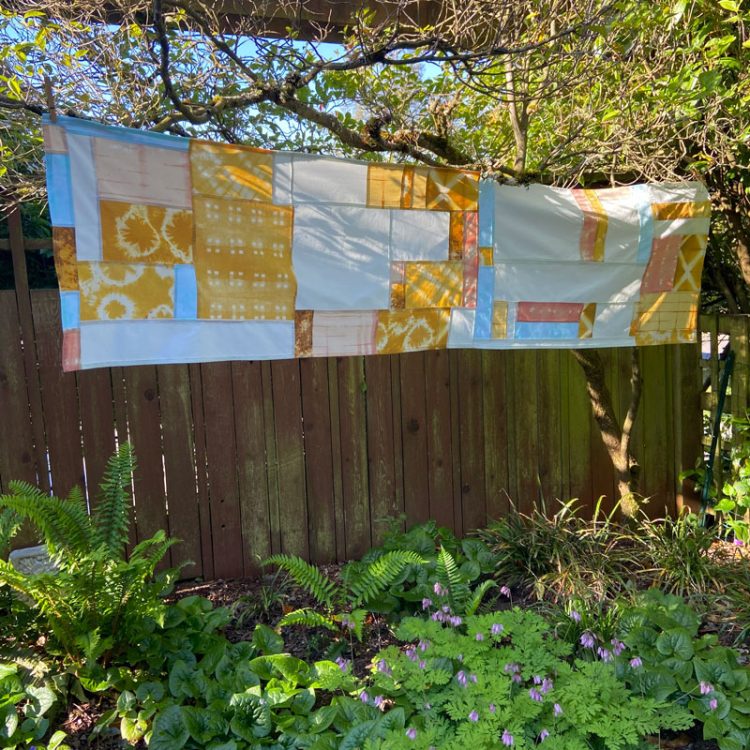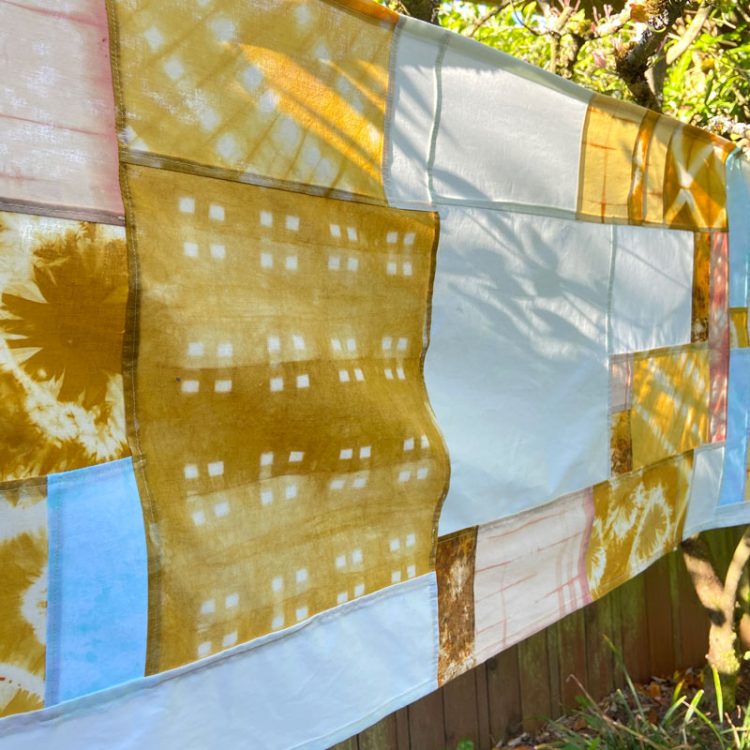Of field and fabric Of field and fabric Of field and fabric
Crescent Calimpong combines art and ecology with wildcrafting, a process of collecting plants for use in food, medicine and craft.
By Shin Yu Pai | Photos courtesy of Crescent Calimpong | May 15, 2025

Plants connect Crescent Calimpong, ’14, to place and season. Pay attention to the annual cherry blossom bloom on campus, and you’ll notice that the trees flower later than they did historically.
This close interest in the natural world drew Calimpong to a career in ecological restoration planting native plant species and removing invasives.
As a restoration planner with King County’s Water and Land Resources Division, Calimpong works with the Washington Conservation Corps to restore habitat, perform maintenance and do new planting. Working with multidisciplinary teams, Calimpong helps plan large projects that tie to larger county initiatives. “Habitat restoration is a place where we can do something tangible and have an action,” she says. “It’s a philosophy that our interactions with nature don’t have to be extractive.”
Calimpong loves foraging, gathering and spending time in the natural world. Her interest in natural dyes reflects that connection—“Plants give us color and a way to put color into our clothing without using products with lots of toxins and harsh chemicals” she says. Working for King County, she has blended habitat restoration work, teaching and artmaking, leading workshops in natural dyeing techniques for participants in King County Park’s Youth Conservation Corps.
Calimpong moved from California to Seattle to earn a Master in Environmental Horticulture (MEH) from the School of Forestry. At the UW, Calimpong learned to conduct site assessments, organize events and plan projects. At Shoreline’s Richmond Beach she replanted existing dune grass and added shrubs on the beach’s hillside to stabilize the soil. Prior to UW, she lived in San Francisco, led volunteers and performed habitat restoration for Save the Bay.
As an undergraduate at the University of California, Santa Cruz, Calimpong double majored in environmental studies and fine art, with a focus on photography and printmaking. Her thesis was a photo-documentary essay on the Klamath Basin, a watershed where four dams were recently removed in 2024. At the UW, her interest in free-flowing rivers, abundant salmon runs, and healthy watersheds led to a plant survival study behind the former Elwha Dam.
After working in several restoration-related roles and weathering the economic downturn in 2009, Calimpong became the summer print-shop studio coordinator at Pilchuck Glass School. “The reset gave me the time to think of the next step in my career,” she says.
Now, more than 15 years later, Calimpong returns to Pilchuck to teach workshops on wildcrafting and natural dyeing. She will lead participants through the process from scouring—pulling out waxes and stains—and mordanting to applying natural dye to cotton fabrics. Calimpong will showcase folding the fabric to create resist patterns and using easily available materials like onion skins and marigolds to develop beautiful golden yellow tones.
- Photo by Celeste Calimpong.
- Photo by Celeste Calimpong.
- Photo by Celeste Calimpong.
Calimpong makes wearables, like t-shirts or bandanas, experimenting with her natural-dyed fabric to see how long the colors hold with regular washing. Last year, she made a quilted piece for the Community Altar project in the Climate Emergency Room at the Seattle Art Book Fair.
Her most recent project is a zine titled “Rock Pile” that she created with her husband, Seattle comics artist Jackson Barnes. Under Calimpong’s art direction, Barnes designed and printed the zine with his small press, Living Room Press, using a risograph printer. “It’s a collection of musings on rocks I’ve stuffed in my pockets,” Calimpong says. “I always stick rocks in my pocket. But I’ve started limiting myself. You can collect a lot of rocks if you have that habit.” The project features photographs of stones, a drawing and various ruminations on rocks as vessels of memory. “It’s a book about time and place.”
For more info on Calimpong’s workshops, visit her website or join her natural dye workshop at Pilchuck on September 13.


